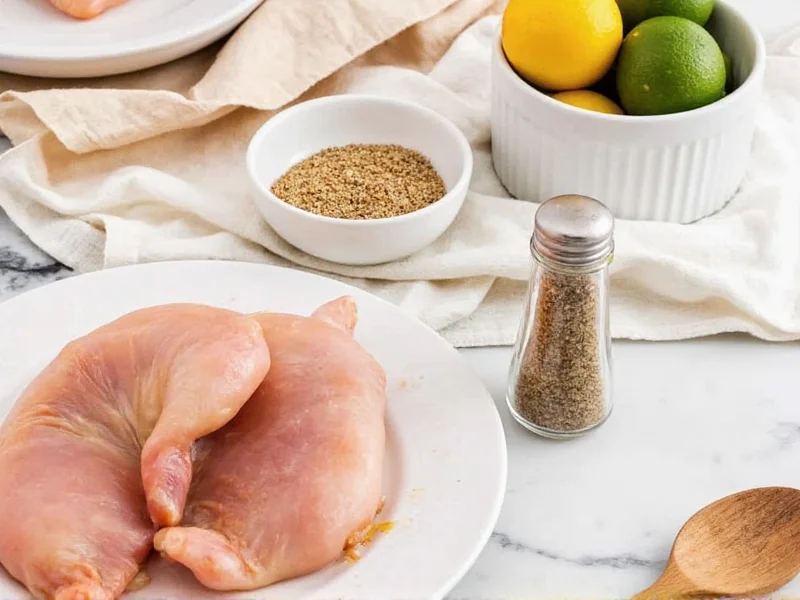Essential Ingredients and Their Roles
Each component in basic chicken seasoning serves a specific purpose in building complex flavor:
- Paprika - Provides color and subtle sweetness while balancing stronger flavors
- Garlic powder - Adds savory depth without burning like fresh garlic
- Onion powder - Contributes natural sweetness and umami foundation
- Salt - Enhances all flavors and helps retain moisture during cooking
- Black pepper - Offers gentle heat and aromatic complexity
Perfect Proportions for Balanced Flavor
Getting the ratios right separates good seasoning from great seasoning. The following measurements create a versatile blend suitable for most cooking methods and dietary preferences:
| Ingredient | Measurement | Flavor Contribution |
|---|---|---|
| Paprika | 2 tablespoons | Color, mild sweetness |
| Garlic powder | 1 tablespoon | Savory depth |
| Onion powder | 1 tablespoon | Umami foundation |
| Salt | 1½ teaspoons | Flavor enhancement |
| Black pepper | 1 teaspoon | Aromatic heat |
Customizing Your Basic Chicken Seasoning
Once you've mastered the foundational blend, consider these simple variations for different culinary applications:
- For grilling - Add ½ teaspoon smoked paprika and ¼ teaspoon cayenne for char-friendly flavor
- For baking - Include 1 teaspoon dried thyme or rosemary for herbaceous notes
- For meal prep - Reduce salt to 1 teaspoon if preparing in advance
- For keto diets - Ensure all ingredients are pure spices without fillers
- For paleo cooking - Verify paprika contains no anti-caking agents
Application Techniques for Maximum Flavor
How you apply seasoning matters as much as the blend itself. Follow these professional techniques:
- Dry chicken thoroughly with paper towels before seasoning
- Apply a light coating of olive oil or avocado oil first to help seasoning adhere
- Rub seasoning gently but thoroughly into all surfaces, including crevices
- Allow minimum 30 minutes resting time before cooking (2 hours ideal)
- For whole chickens, gently loosen skin and apply seasoning directly to meat
Storage Guidelines for Homemade Seasoning
Proper storage maintains freshness and potency of your basic chicken seasoning blend:
- Store in airtight glass container away from light and heat
- Label with preparation date for freshness tracking
- Use within 6 months for optimal flavor (though safe indefinitely)
- Check for color changes or loss of aroma indicating degradation
- Never store near stove or oven where heat and humidity fluctuate
Common Seasoning Mistakes to Avoid
Even experienced cooks make these basic chicken seasoning errors:
- Applying seasoning immediately before cooking (no time for flavor penetration)
- Using fresh garlic instead of powder (burns easily at cooking temperatures)
- Over-salting, especially with pre-salted store blends
- Mixing seasoning with wet ingredients before application (creates paste)
- Not adjusting for different chicken cuts (thighs need less salt than breasts)
Why Homemade Beats Store-Bought
Creating your own basic chicken seasoning from scratch offers significant advantages over commercial products. Most store-bought blends contain anti-caking agents, preservatives, and excessive sodium that compromise both health and flavor. When making your own seasoning blend, you control exactly what goes into it, ensuring pure ingredients without unnecessary additives. This simple homemade chicken seasoning recipe contains no MSG, no sugar, and no mysterious ingredients—just pure spices that enhance rather than mask chicken's natural flavor. Plus, the cost per batch of homemade seasoning costs pennies compared to premium store brands.











 浙公网安备
33010002000092号
浙公网安备
33010002000092号 浙B2-20120091-4
浙B2-20120091-4